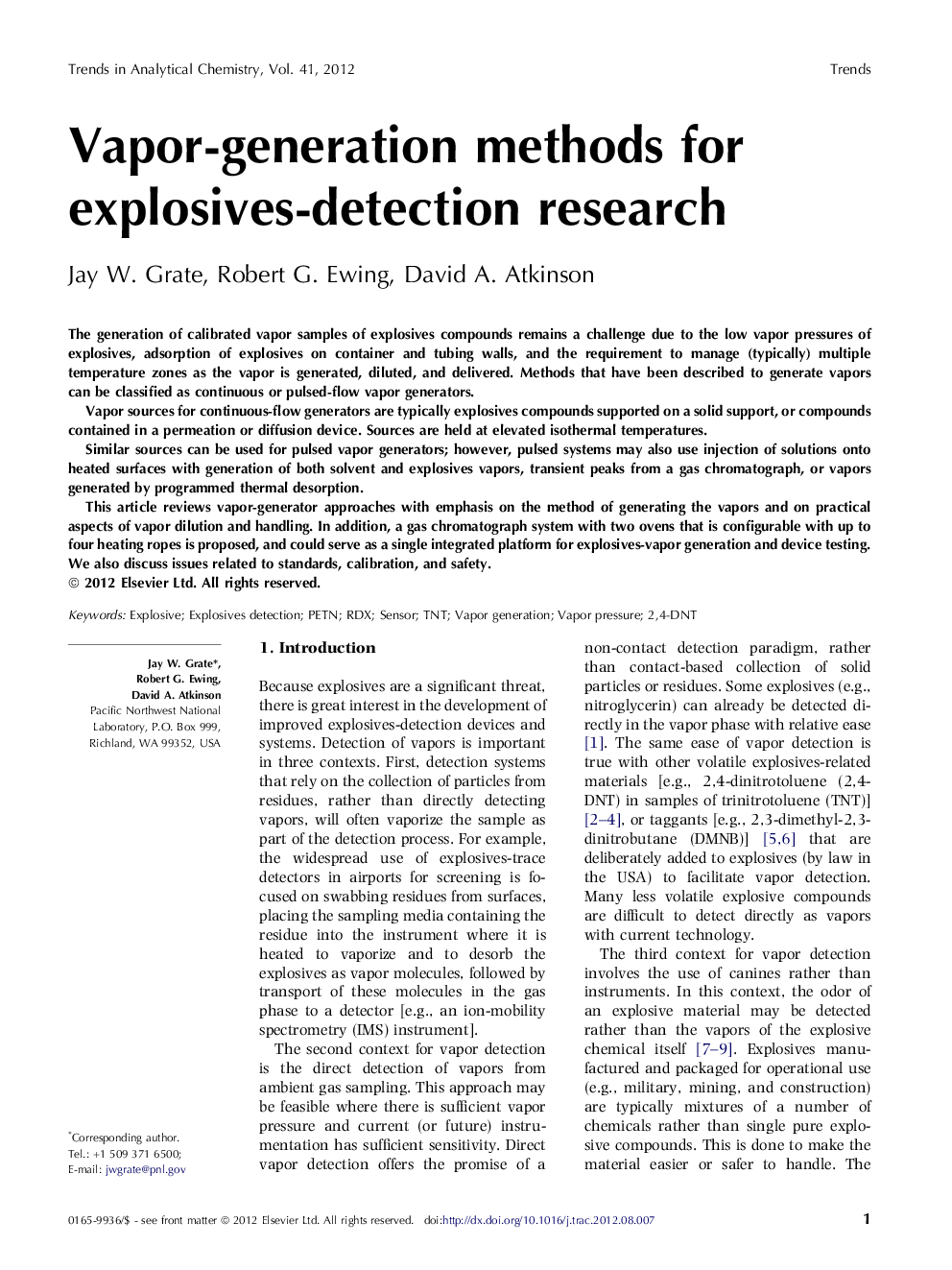| Article ID | Journal | Published Year | Pages | File Type |
|---|---|---|---|---|
| 1248521 | TrAC Trends in Analytical Chemistry | 2012 | 14 Pages |
The generation of calibrated vapor samples of explosives compounds remains a challenge due to the low vapor pressures of explosives, adsorption of explosives on container and tubing walls, and the requirement to manage (typically) multiple temperature zones as the vapor is generated, diluted, and delivered. Methods that have been described to generate vapors can be classified as continuous or pulsed-flow vapor generators.Vapor sources for continuous-flow generators are typically explosives compounds supported on a solid support, or compounds contained in a permeation or diffusion device. Sources are held at elevated isothermal temperatures.Similar sources can be used for pulsed vapor generators; however, pulsed systems may also use injection of solutions onto heated surfaces with generation of both solvent and explosives vapors, transient peaks from a gas chromatograph, or vapors generated by programmed thermal desorption.This article reviews vapor-generator approaches with emphasis on the method of generating the vapors and on practical aspects of vapor dilution and handling. In addition, a gas chromatograph system with two ovens that is configurable with up to four heating ropes is proposed, and could serve as a single integrated platform for explosives-vapor generation and device testing. We also discuss issues related to standards, calibration, and safety.
► Methods to generate vapors of explosives compounds are reviewed. ► Generators deliver either a known concentration or a known mass of vapor. ► Vapor generators are classified as either continuous or pulsed flow. ► Issues of standards, calibration and safety are also discussed.
